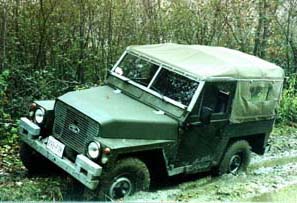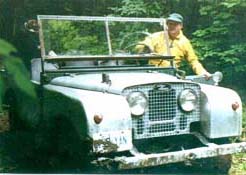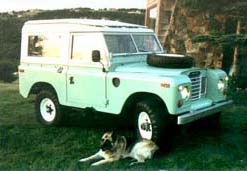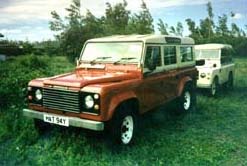| Home | |||||||||||||||||||||||||||||||||
| ------------------------- | |||||||||||||||||||||||||||||||||
| Club Information | |||||||||||||||||||||||||||||||||
| ------------------------- | |||||||||||||||||||||||||||||||||
| Events | |||||||||||||||||||||||||||||||||
|
|||||||||||||||||||||||||||||||||
| ------------------------- | |||||||||||||||||||||||||||||||||
| Newsletter | |||||||||||||||||||||||||||||||||
| ------------------------- | |||||||||||||||||||||||||||||||||
| Member's Prose & Pages | |||||||||||||||||||||||||||||||||
| ------------------------- | |||||||||||||||||||||||||||||||||
| Miscellaneous | |||||||||||||||||||||||||||||||||
| ------------------------- | |||||||||||||||||||||||||||||||||
| Index | |||||||||||||||||||||||||||||||||
| ------------------------- | |||||||||||||||||||||||||||||||||
| The Land Rover FAQ | |||||||||||||||||||||||||||||||||
| ------------------------- | |||||||||||||||||||||||||||||||||
| The Rover Web | |||||||||||||||||||||||||||||||||
| ------------------------- |
Fifty Years of Land-Rover by Murray Jackson
In some remote corners of the world, where roads are unknown, the Land Rover is the only vehicle ever seen. This unique machine, which has become one of the world's most recognizable vehicles, celebrated its 50th anniversary in 1998. The Land Rover's origins can be traced to Solihull, England, in the post-W.W. II years. The Rover Company had manufactured no vehicles during the war and needed a stopgap vehicle to produce while it re-established car production. Maurice Wilks, Rover's chief engineer and brother of company Chairman Spencer Wilks, had used an army surplus Jeep on his estate in Anglesey, North Wales, and it was this vehicle which inspired the notion of producing an adaptable workhorse for farmers. Because scarce steel supplies were allocated based on export performance, the Land Rover's body was formed of readily available Birmabright aluminum alloy. The first prototype, based largely on a Jeep chassis, was a crude vehicle with center steering, seating for three and few concessions to creature comforts.
The new Land Rover was well received and sales increased at a brisk pace. Less brisk, however, was the process of evolution of the vehicle itself. The basic design would not change for decades as Land Rover stayed true to the original concepts of simplicity and durability. The original 80" wheelbase increased to 88" for short wheelbase models and 109" for long wheelbase models. The gasoline engine grew to 2.0 litres in 1953 and to 2.25 litres in 1958. A diesel engine option was first offered in 1957.
To the horror of many owners, the grille was changed from steel mesh to plastic, which meant it could no longer be used as a campfire grille. The Land Rover's versatility was enhanced by optional power-take-off mechanisms which enabled it to drive a variety of agricultural and construction machinery. Many special variants such as fire tenders and mobile welders were produced by Land Rover or by outside companies approved by Land Rover. The unique capabilities of the Land Rover resulted in its exportation worldwide and the establishment of assembly operations in a number of countries. The Land Rover was popular with the armed forces of many countries and special models directly suited to military requirements were quickly developed to exploit this lucrative market. These included Forward Control models and the Lightweight which was designed to be transported under the Wessex helicopter.
In a radical departure from the earlier leaf-sprung vehicles, the new 1970 Range Rover featured coil spring suspension, full time 4WD and a 3.5 litre V8 engine formerly used by Buick. This new model gained rapid acceptance and brought a new level of performance to the Land Rover range. As with the Series I to III vehicles, the Range Rover has evolved steadily and, in recent years, has incorporated many convenience and luxury features. The Range Rover was supplemented by the Discovery in 1989, a smaller but equally capable model designed to exploit the growing sport utility vehicle market. In 1997, Land Rover introduced the Freelander, a smaller, unibodied vehicle designed to compete with compact sport utilities such as the Honda CRV and Toyota Rav4. The first Land Rovers arrived in North America in 1949. Not surprisingly, many earned their keep in farming, mining and lumbering operations. The Series I, II and III models were available until 1974 when emission control regulations forced Land Rover to abandon the North American market. Land Rover did not re-appear in North America until 1987 when Range Rover of North America was established in the U.S.A.. In the early '90s, Land Rover Canada was founded and the U.S. operation was renamed Land Rover of North America. These companies currently offer the Range Rover and Discovery models. Of particular interest to lovers of the older Series models was the limited North American availability from 1993 to 1997 of the Defender 90 and 110 models, the successors to the Series III models. The Land Rover's popularity in North America was not diminished by almost two decades of unavailability. For many Series I to III owners, the vehicle's charm lies in its rugged simplicity; owners can actually maintain, repair or restore their own vehicles. As a result, there are a surprising number of well-organized owners' clubs. Among the larger of the US groups are Bay State Rover Owners Association (Massachusetts), Downeast Land Rover Club (Maine), Empire Rover Owners Society (New York) and Rover Owners Association of Virginia. The largest Canadian club is Ottawa Valley Land Rovers. Members of these clubs share a fierce passion for their aluminum workhorse and a common reaction when the uninitiated refer to their vehicle as a "Jeep". Invariably, Land Rover clubs act as support groups with experienced owners providing mechanical and off-road guidance to new members. All clubs welcome Land Rovers of all ages. Land Rover's 50th anniversary was marked by a large gathering of old and new models at Land Rover's Lanham, Maryland, headquarters and a multi-club, international event held in Greek Peak, New York. Additional information on Land Rover clubs, events and parts suppliers can found on the Internet at www.rover-clubs.org. |
|||||
Last modified April 30, 2005.
404 Not Found |
|||||



